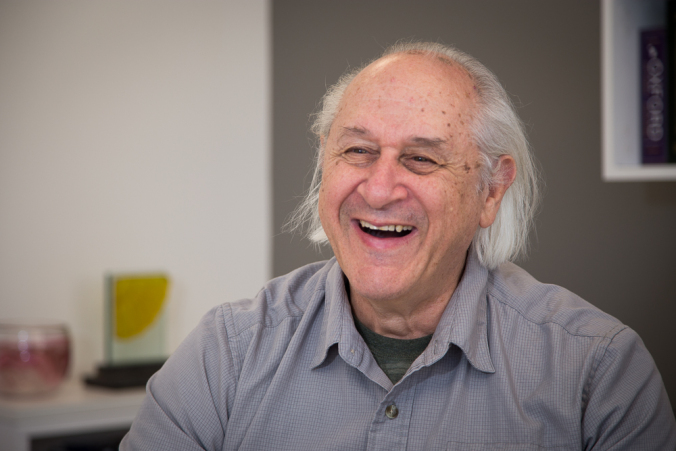By Kevin McCormack

Mark Noble. Photo by Todd Dubnicoff
Mark Noble, Ph.D., is a pioneer in stem cell research and the Director of the University of Rochester Stem Cell and Regenerative Medicine Institute in New York. He is also a member of CIRM’s Grants Working Group (GWG), the panel of independent scientific experts we use to review research applications for funding and decide which are the most promising.
Mark has been a part of the GWG since 2011. When asked how he came to join the GWG he joked: “I saw an ad on Craigslist and thought it sounded fun.” But he is not joking when he says it is a labor of love.
“My view is that CIRM is one of the greatest experiments in how to develop a new branch of science and medicine. If you look at ventures, like the establishment of the National Institutes of Health, what you see is that when there is a concentrated effort to achieve an enormous goal, amazing things can happen. And if your goal is to create a new field of medicine you have to take a truly expansive view.”
Mark has been on many other review panels but says they don’t compare to CIRM’s.
“These are the most exciting review panels in which I take part. I don’t know of any comparable panels that bring together experts working across such a wide range of disciplines and diseases. It’s particularly interesting to be involved in reviews at this stage because we get to look at the fruits of CIRM’s long investment, and at projects that are now in, or well on the way towards, clinical trials.
It’s a wonderful scientific education because you come to these meetings and someone is submitting an application on diabetes and someone else has submitted an application on repairing the damage to the heart or spinal cord injury or they have a device that will allow you to transplant cells better. There are people in the room that are able to talk knowledgeably about each of these areas and understand how the proposed project might work in terms of actual financial development, and how it might work in the corporate sphere and how it fits in to unmet medical needs. I don’t know of any comparable review panels like this that have such a broad remit and bring together such a breadth of expertise. Every review panel you come to you are getting a scientific education on all these different areas, which is great.”
Another aspect of CIRM’s work that Mark admires is its ability to look past the financial aspects of research, to focus on the bigger goal:
“I like that CIRM recognizes the larger problem, that a therapy that is curative but costs a million dollars a patient is not going to be implemented worldwide. Well, CIRM is not here to make money. CIRM is here to find cures for unmet medical needs, which means that if someone comes in with a great application on a drug that is going to cure some awful disease and it’s not going to be worth a fortune, that is not the main concern. The main concern is that you might be able to cure this disease and yeah, we’ll put up money to help you so that you might be able to get into clinical trials, to get enough information to find out if it works. And to have the vision to go all the way from, ‘ok, you guys, we want you to enter this field, we want you to be interested in therapeutic development, we are going to help you structure the clinical trials, we are going to provide all the Alpha Stem Cell Clinics that can talk to each other to make the clinical trials happen.
The goal of CIRM is to change medicine and these are the approaches that have worked really well in doing this. The CIRM view clearly is:
‘There are 100 horses in this race and every single one that crosses the finish line is a success story.’ That’s what is necessary, because there are so many diseases and injuries for which new approaches are needed.”
Mark says working with CIRM has helped him spread the word back home in New York state:
“I have been very involved in working with the New York state legislature over the years to promote funding for stem cell biology and spinal cord injury research so having the CIRM experience has really helped me to understand what it is that another place can try and accomplish. A lot of the ideas that have been worked out at CIRM have been extremely helpful for statewide scientific enterprises in New York, where we have had people involved in different areas of the state effort talk to people at CIRM to find out what best practice is.”
Mark says he feels as if he has a front row seat to history.
“Seeing the stem cell field grow to its present stage and enhancing the opportunity to address multiple unmet medical needs, is a thrilling adventure. Working with CIRM to help create a better future is a privilege.”